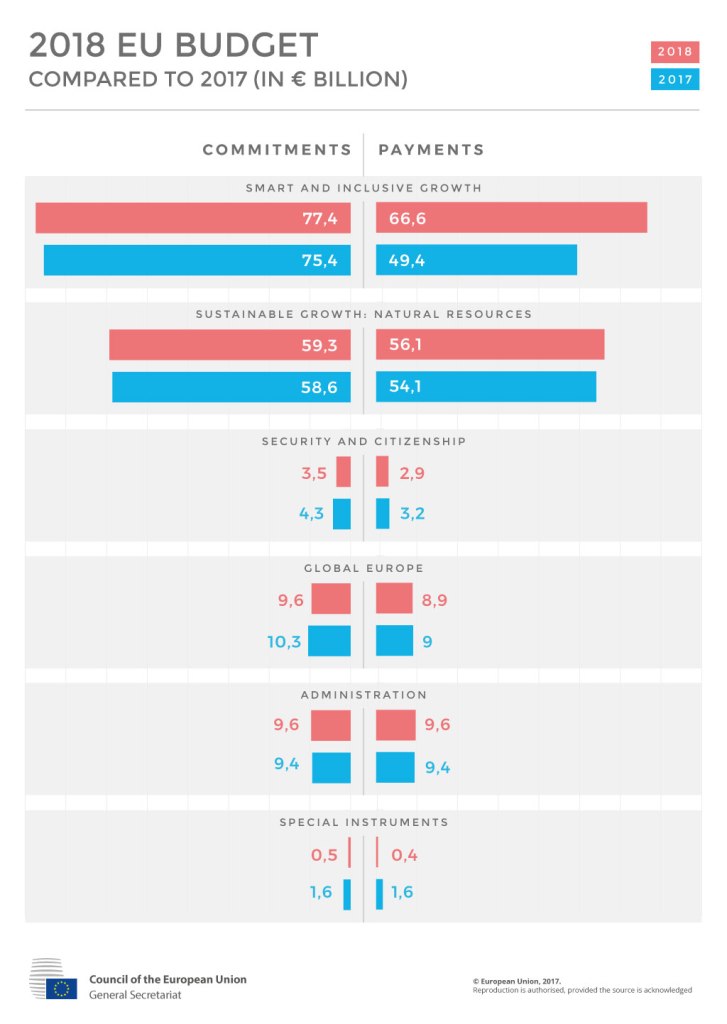 English available languages
English available languages
The Council and the European Parliament reached agreement on an EU budget for 2018 that strongly reflects the EU’s main policy priorities. Total commitments are set at €160.1 billion and payments atb €144.7 billion. Märt Kivine, deputy finance minister of Estonia and chief Council negotiator for the 2018 EUbudget said:
“We have strived this year to maximise the impact of EU spending, whilst maintaining sufficient leeway to be able to react to unforeseeable needs. The 2018 budget focuses strongly on priorities such as boosting economic growth and job creation, strengthening security and addressing the challenges posed by migration.”
| Headings | 2018 EU budget (in EUR million) | ||
| Commitments | Payments | ||
| 1. Smart and inclusive growth | 77 534 | 66 624 | |
| – 1a. Competitiveness for growth and jobs | 22 001 | 20 097 | |
| – 1b. Economic, social and territorial cohesion | 55 532 | 46 527 | |
| 2. Sustainable growth: natural resources | 59 285 | 56 084 | |
| 3. Security and citizenship | 3 493 | 2 981 | |
| 4. Global Europe | 9 569 | 8 906 | |
| 5. Administration | 9 666 | 9 666 | |
| Special instruments | 567 | 420 | |
| TOTAL | 160,114 | 144,681 | |

Additional information
The EU’s annual budget lays down all of the European Union’s expenditure and revenue for one year. It ensures the funding of EU policies and programmes in line with the EU’s political priorities and legal obligations.
Annual budgets have to fit within the expenditure limits (‘ceilings’) set in the multiannual financial framework (MFF). The EU usually sets its annual budget at a lower level to be able to meet unforeseen expenditure, if necessary.
The annual budget also ensures that the EU receives the revenue it needs to finance its spending. The annual EU budget must balance expenditure and revenue.
Source: EC
 English available languages
English available languages
